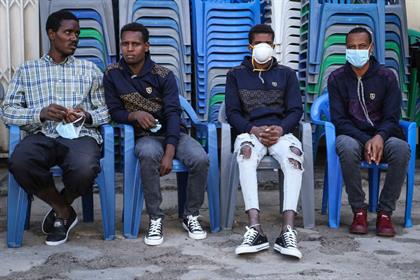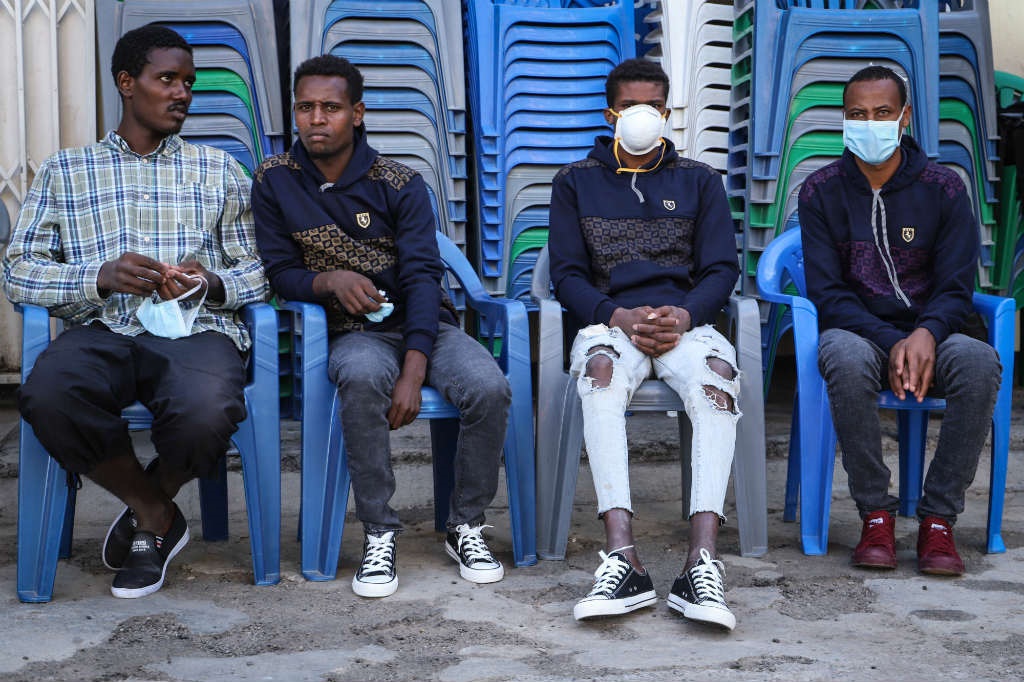Addis Ababa – As the truck travelled south, Yosef
Moliso and the other Ethiopian migrants trapped inside its sealed cargo
container pounded on the walls for help while struggling to breathe.
By the time border guards in Mozambique stopped the
vehicle for inspection, Yosef had passed out, though it could have been much
worse: 64 of his fellow migrants were already dead of asphyxiation.
“It was very hot inside, like a fire
burning,” recalled Yosef, one of just 14 survivors of the ill-fated attempt
to reach South Africa, where the migrants hoped to earn enough money to lift
their families back in Ethiopia out of poverty.
“If I ever run into the people responsible,
I’ll grab them and scream at them until the police come.”
Ethiopia is one of the top five source countries
for the more than four million migrants in South Africa, the continent’s most
industrialised economy, according to the International Organisation for
Migration (IOM).
The deaths in March – one of the worst such
incidents for Ethiopian migrants in recent memory – spotlighted the dangers
faced by thousands of young men who travel along what’s known as the “Southern Route” each year.
But the path ahead for the few who survived helps
explain why the route remains so popular.
On Friday, Yosef and 10 other migrants were
scheduled to leave a centre run by the IOM to board buses back to their home
regions.
In interviews with AFP, the men said they were
happy to be back in Ethiopia, but admitted they had only hazy ideas of how they
might support themselves in the future.
“It’s not easy to be a young Ethiopian boy, to
just sit at home and not have a job. That is what’s forcing them to
leave,” said Sara Basha, programme coordinator for IOM Ethiopia.
“Once they come back home, with incidents like
this, they go back to a community where they have nothing again. They’re still
vulnerable, so frustration might lead them to decide to leave again.”
The journey
Tigestu Birhanu was inspired to migrate by one of
his cousins, who moved from their home region in southern Ethiopia to South
Africa a few years ago.
Tigestu, 20, didn’t know exactly what this cousin
did, but he knew it was lucrative: The cousin’s remittances have helped his
family buy a house and a new car.
After the cousin offered to pay Tigestu’s way – other
migrants said the going rate on the Southern Route was 200 000 Ethiopian birr,
or nearly $6 000 – the decision was a no-brainer.
Setting off with two men from the same area,
Tigestu embarked on months of rough travel – sometimes walking, sometimes
riding on the backs of motorcycles or in trucks.
The group of migrants swelled as the journey
progressed.
Food was scarce, and the men often slept outside in “jungles” to avoid detection by the authorities, Tigestu said.
They were guided by a network of smugglers of
various nationalities – a set-up that Basha said complicates efforts to
identify and prosecute those who put migrants at risk.
When the migrants first saw the cargo container
they were meant to hide inside to cross into Mozambique, many resisted, having
heard horror stories of suffocation.
But the smugglers threatened them with machetes,
and Tigestu said they had no choice.
Like Yosef, Tigestu lost consciousness before the
border guards forced open the container to let the migrants out.
When he awoke in a hospital a few days later, he
learned that even though he had survived, the other two men from his home
region had not.
Cracking down
Ethiopia is taking steps to curb risky migration to
the south – as well as along similarly dangerous routes east to Saudi Arabia
and north to Europe, Basha said.
Officials are trying to strengthen law
enforcement’s investigative capabilities and collaborate more with neighbouring
countries, she said.
Police spokespersons declined to comment on the
Mozambique deaths, but IOM officials said Ethiopian officers had recently
interviewed the survivors as part of a probe.
Just as important, though, is trying to give young
men more opportunities within Ethiopia so they’re less desperate to leave,
Basha said.
In addition to helping survivors like Yosef and
Tigestu get back on their feet economically, the IOM is broadly pressuring
Ethiopia to focus more energy on youth unemployment – a problem that could
become even starker because of the economic downturn resulting from the
coronavirus pandemic.
As for Yosef and Tigestu, both men said that after
surviving their ordeal in Mozambique they had no plans to try their luck as
migrants again.
“When I woke up I was very sad about those who
died,” Yosef said, “and I told myself that it would be better to be a
beggar in Ethiopia.”


